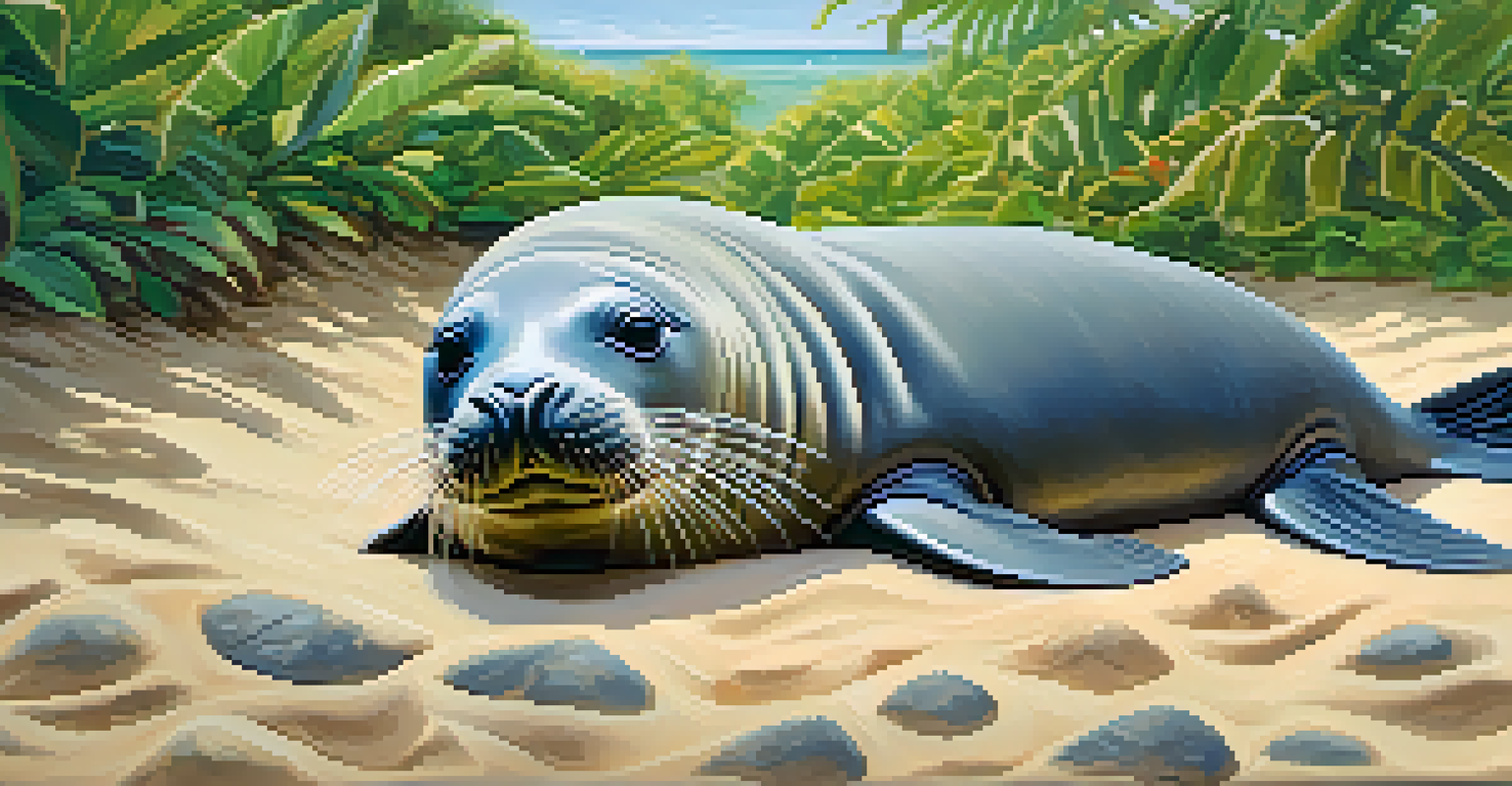Threats to Hawaii's Biodiversity: Challenges and Solutions

Understanding Hawaii's Unique Biodiversity
Hawaii is home to an astonishing array of plant and animal species, many of which exist nowhere else on Earth. This unique biodiversity is a result of the islands' isolation and diverse ecosystems, ranging from lush rainforests to volcanic landscapes. However, this precious natural heritage is under threat, making it vital to understand the factors contributing to its decline.
In nature's economy, the left hand does not know what the right hand does.
For instance, native birds like the ʻIʻiwi and the Hawaiian Goose face significant challenges due to habitat loss and climate change. The delicate balance of ecosystems in Hawaii means that the loss of even a single species can have a cascading effect on others. With around 25% of the native species already endangered, the time to act is now.
By recognizing the unique characteristics that make Hawaii’s biodiversity special, we can appreciate the urgency of protecting it. Understanding these elements lays the groundwork for tackling the threats that endanger them.
Invasive Species: A Major Threat
The introduction of non-native species is one of the most significant threats to Hawaii's native biodiversity. Invasive species, such as the mongoose and several types of weeds, disrupt ecosystems and outcompete native species for resources. This not only leads to a decline in native populations but can also alter the landscape itself.

For example, the introduction of the feral pig has resulted in severe soil erosion and the destruction of native plants. These invasive species often thrive due to a lack of natural predators, which allows them to proliferate unchecked. The impact is profound, as they can completely change the dynamics of the ecosystems they invade.
Hawaii's Biodiversity is Unique
Hawaii hosts a variety of plant and animal species found nowhere else, making its conservation urgent.
Addressing the invasive species problem requires coordinated efforts, including prevention, control measures, and public awareness campaigns. By understanding the severity of this issue, we can work toward protecting Hawaii's unique flora and fauna.
Climate Change Impacts on Biodiversity
Climate change poses a significant threat to Hawaii's biodiversity, affecting everything from sea levels to temperature and precipitation patterns. These changes can lead to habitat loss, altered food availability, and increased vulnerability to diseases. For instance, rising sea levels threaten coastal habitats like coral reefs, which are vital for many marine species.
The Earth does not belong to us: we belong to the Earth.
Additionally, fluctuations in temperature can disrupt breeding cycles and migration patterns, further jeopardizing native species. The Hawaiian honeycreeper, for example, is already facing challenges due to changing weather patterns that affect its food sources. As climate change accelerates, these challenges will only intensify, making it crucial to act now.
Mitigating climate change impacts involves both local and global efforts, from reducing carbon footprints to restoring habitats. By understanding these connections, we can better protect Hawaii's biodiversity for future generations.
Human Activities and Habitat Destruction
Human activities such as urban development, agriculture, and tourism can lead to significant habitat destruction in Hawaii. As the population grows and more land is developed, natural habitats are increasingly fragmented or destroyed. This not only impacts native species but also disrupts the ecological processes that allow ecosystems to function effectively.
For instance, the expansion of agricultural land has led to the degradation of crucial habitats, affecting species that rely on these ecosystems. Moreover, tourism, while economically beneficial, often strains local resources and can lead to environmental degradation if not managed responsibly. The challenge lies in balancing development with the need to protect these unique ecosystems.
Invasive Species Threaten Ecosystems
Non-native species disrupt Hawaii's delicate ecosystems, leading to the decline of native populations.
To address these issues, sustainable development practices and conservation efforts must be prioritized. By adopting responsible approaches, we can minimize our impact while still enjoying the beauty of Hawaii.
Conservation Efforts in Hawaii
Despite the challenges, numerous conservation efforts are underway in Hawaii to protect its unique biodiversity. Organizations and local communities are working together to restore habitats, control invasive species, and promote sustainable practices. These initiatives are crucial for the survival of many endangered species and the ecosystems they inhabit.
For example, the state has implemented programs aimed at eradicating invasive species and restoring native habitats, such as the recovery efforts for the Hawaiian monk seal. Community involvement is also vital, with local groups often leading the charge in conservation projects. Their passion and dedication are essential components in the fight to protect Hawaii's natural treasures.
By supporting these conservation efforts, everyone can play a role in preserving Hawaii's biodiversity. Whether through volunteering, educating others, or simply practicing sustainable habits, collective action can make a significant difference.
The Role of Education in Biodiversity Conservation
Education plays a crucial role in conservation efforts, as it helps raise awareness about the importance of biodiversity and the threats it faces. By informing the public about local species and ecosystems, educational programs can foster a sense of stewardship and responsibility towards the environment. Schools, community organizations, and local governments can all contribute to this educational effort.
For instance, programs that involve students in hands-on conservation activities not only teach valuable skills but also instill a lifelong appreciation for the environment. When individuals understand the interconnectedness of ecosystems, they are more likely to advocate for their protection. This knowledge is particularly important in Hawaii, where the unique biodiversity is at risk.
Community Involvement Drives Success
Engaging local communities in conservation efforts enhances the effectiveness and sustainability of protecting Hawaii's biodiversity.
Ultimately, education empowers individuals and communities to take action, whether through conservation initiatives or sustainable practices. By investing in education, we can create a future where Hawaii's biodiversity flourishes.
Community Involvement: A Key to Success
Community involvement is vital for successful biodiversity conservation in Hawaii. Local communities often possess invaluable knowledge about their ecosystems and can play a significant role in protecting them. Engaging residents in conservation efforts not only fosters a sense of ownership but also builds a network of support for ongoing initiatives.
For example, community-led restoration projects have proven effective in reviving native habitats and species. These grassroots movements empower individuals to contribute to conservation efforts while also educating them about the importance of preserving their natural surroundings. The success of these projects often hinges on collaboration between local communities, government agencies, and conservation organizations.

By encouraging community involvement, we can harness local expertise and passion, making conservation efforts more effective and sustainable. Together, we can ensure that Hawaii's biodiversity is preserved for generations to come.